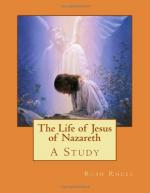62. Moreover, the songs of Mary (Luke i. 46-55) and Zachariah (Luke i. 68—79) bear in themselves the evidence of origin before the doctrine of the cross had transformed the Christian idea of the Messiah. That transformed idea abounds in the Epistles and the Acts, and it is difficult to conceive how these songs (if they were later inventions) could have been left free of any trace of specifically Christian ideas. A Jewish Christian would almost certainly have made them more Christian than they are; a Gentile Christian could not have made them so strongly and naturally Jewish as they are; while a non-Christian Jew would never have invented them. Taken with the evidence in Ignatius (Ad Eph. xviii., xix.) of the very early currency of the belief in a miraculous birth, they confirm the impression that it is easier to accept the evidence offered for the miracle than to account for the origin of the stories as legends. The idea of a miraculous birth is very foreign to modern thought; it becomes credible only as the transcendent nature of Jesus is recognized on other grounds. It may not be said that the incarnation required a miraculous conception, yet it may be acknowledged that a miraculous conception is a most suitable method for a divine incarnation.
63. These gospel stories are chiefly significant for us in that they show that he in whom his disciples came to recognize a divine nature began his earthly life in the utter helplessness and dependence of infancy, and grew through boyhood and youth to manhood with such naturalness that his neighbors, dull concerning the things of the spirit, could not credit his exalted claims. He is shown as one in all points like unto his brethren (Heb. ii. 17). Two statements in Luke (ii. 40, 52) describe the growth of the divine child as simply as that of his forerunner (Luke i. 80), or that of the prophet of old (I. Sam. ii. 26). The clear impression of these statements is that Jesus had a normal growth from infancy to manhood, while the whole course of the later life as set before us in the gospels confirms the scripture doctrine that his normal growth was free from sin (Heb. iv. 15).




